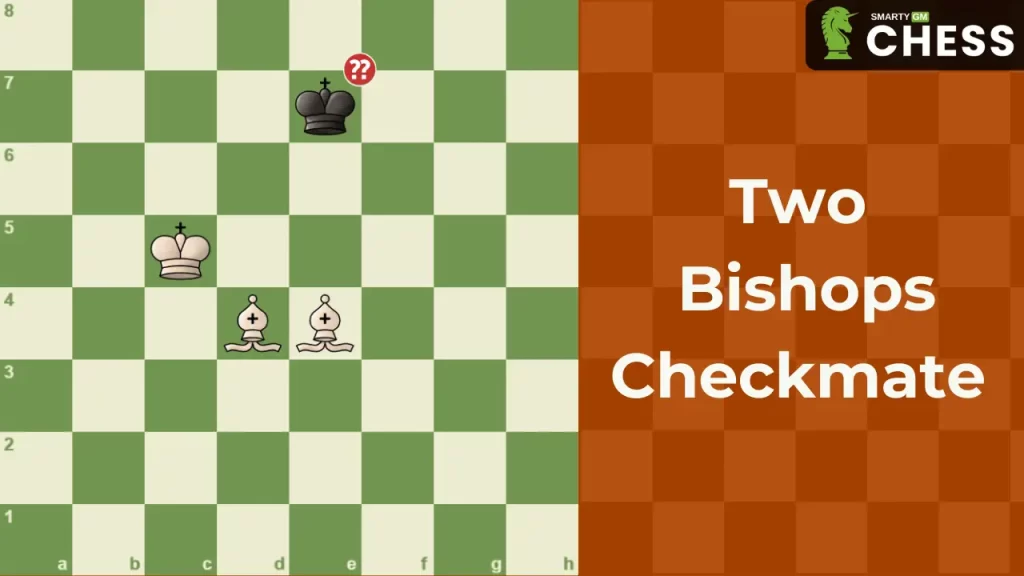Checkmate with Two Bishops is a little tricky, but if you follow some steps, you can easily win and improve your skills in the endgame.
Today, I will show you how to get a checkmate with two Bishops vs. King and how to avoid stalemate.
Read also: Queen and Bishop Checkmate Explain
How to move the Bishop in chess?
Here’s how to move the bishop in chess:
Diagonal Movement: The bishop moves diagonally on the board, covering any number of unoccupied squares.
Color Restriction: Each bishop stays on its initial color (light or dark) throughout the game.
Capturing: To capture, move your bishop diagonally to the square occupied by an opponent’s piece.
Checkmate with Two Bishops
To do a checkmate with two Bishops, you need to reach this position:
Notice that the King has two squares to move: g8 and h8. So here, you play Bishop to e6 (check), and then the King moves to h8. After that, you play Bishop to f6 (Bf6#), and it’s a checkmate.
The opponent King has no legal move.
Set up a position to Checkmate with Two Bishops
To do a checkmate with two Bishops, you need to push your opponent King to any edge of the board by following these steps:
The first step is to position your bishops in such a way that they control these four important central squares.
Our next step is to occupy the center with our bishops. So, you need to get both your bishops into any of these four squares.
Let’s play bishop to d4:
If black plays king to f4, then you occupy the center by playing bishop to d5:
And if black plays king to e6, then you play bishop to e4.
Now, if you look at the board carefully, you will notice that we have blocked these diagonals with our bishops, and the black King is now restricted to only these 12 squares.
The next step would be to bring our king close to our bishops and push the enemy king into a corner.
In this case, you need to bring your king to either c5 or f5.
Remember that if you bring your king to c5, then your bishops will move this way:
And if you bring your king to f5, then your bishops will move this way:
So, let’s say we play Kc5. Here we continue to push the Black King to the edge, and make sure that the black king should never be in a position to attack any of your
bishops on its next move.
Here, the Black king can’t move to any square and it’s a checkmate.
Read also: Rook and Queen Checkmate Explain
Common mistakes to avoid
The most common mistake among players is getting a draw (stalemate). In this position, you can’t play Bishop to f7 because your opponent’s king is not on check, and he cannot move, so it’s a draw.
Another mistake you can make is to try to push the king into a corner in a reckless manner that will cause you to lose your Bishop and get a draw:
Read also: Checkmate with Knight and Bishop
Checkmate with two Bishops for Black
You can follow the same steps for white, and the important thing is to drag the king to the corner and checkmate him.
Two Bishops Endgame Practice Exercises
Find the checkmate in one (Black to move):
Solution:
Find the checkmate in one (White to move):
Solution:
Frequently asked questions (FAQ)
Yes, you can checkmate with two bishops. To do this, you need to coordinate the bishops to control critical squares and confine your opponent king to a corner.
Yes, two bishops are generally considered stronger than two knights, especially in open positions. Bishops control long diagonals, covering more squares and working well together. Knights, while powerful in closed positions and capable of jumping over pieces, lack the same long-range power and coordination.


